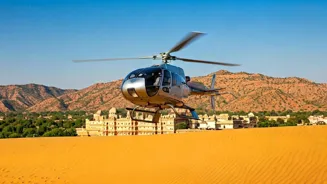The skies of India are under the spotlight! A parliamentary panel's report has raised serious concerns about the state of air safety, pointing to crucial
areas needing immediate attention. Let's unpack what this means for us.
Safety Oversight Matters
The parliamentary committee's investigation was triggered by growing worries among lawmakers following the recent Ahmedabad air crash. The report's central conclusion highlighted the DGCA's weaknesses, including staffing shortages and problematic recruitment methods. Ensuring effective oversight is crucial for passenger safety, like a solid foundation for a robust building.
Accountability is Key
A key aspect of the report focused on accountability. The findings made it clear that the DGCA's effectiveness is compromised. Without proper accountability, the risks in aviation safety increase significantly. This calls for robust measures to ensure those responsible are held accountable for their actions, fostering a culture of responsibility in the sector.
Human Capital Building
The panel underlined the importance of strengthening the regulator by focusing on human capital. This involves addressing the staffing shortages within the DGCA. Effective recruitment strategies are essential to build a capable workforce. Just as a strong cricket team needs good players, aviation safety needs a competent regulator.
Infrastructure & Capacity
The report also touched upon infrastructure and capacity limitations. For the aviation sector to operate effectively, the infrastructure must support its needs. This involves everything from air traffic management systems to airport facilities. Upgrading and expanding these resources is fundamental for enhancing safety and operational efficiency across India.
Domestic MRO Boost
The article indirectly mentions the need for boosting domestic Maintenance, Repair, and Overhaul (MRO) capabilities. This would mean that more of aircraft maintenance happens locally, potentially creating jobs and reducing costs. This would improve turnaround times and boost the overall aviation ecosystem in India, making it more self-reliant.













